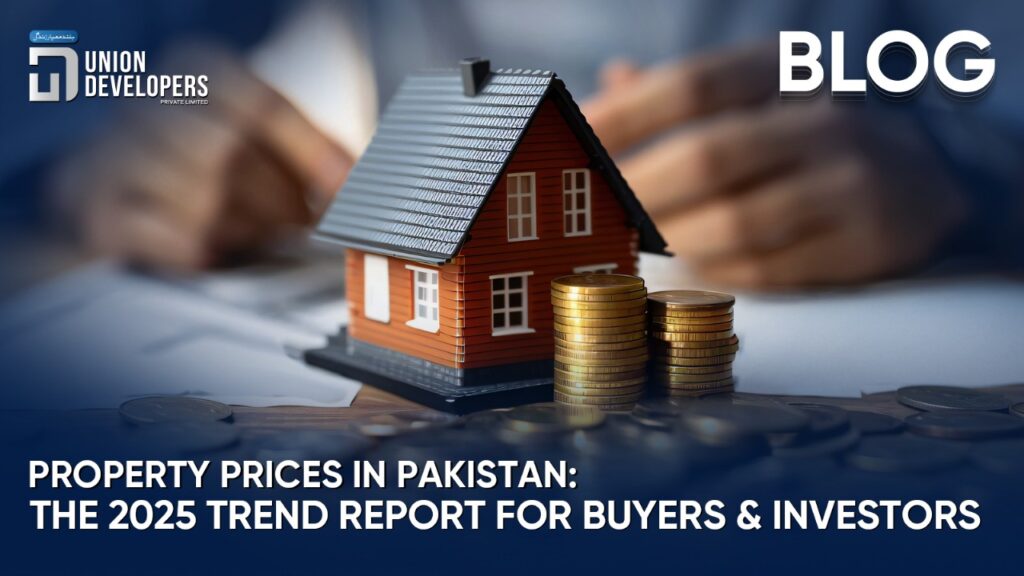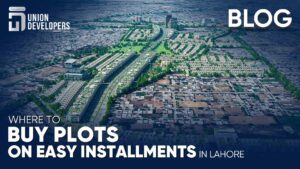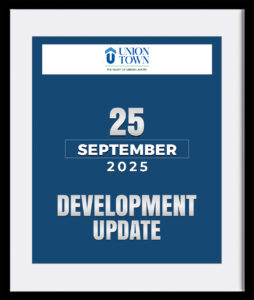Have you ever noticed how every conversation about money in Pakistan certainly leads to a discussion about property? It always starts with fuel prices, gold, or the rupee`s fall, but somehow, it ends with “Yaar, plot le lo. Zameen kabhi nuksan nahi deti.” And truthfully, that advice has not aged a day.
Property prices have been edging up through 2025, not uniformly, but enough to matter for anyone buying, selling, or holding. Lahore, Islamabad, and Karachi continue to set the pace.
As per recent data, the price of residential property has increased by approximately 10.5% annually. The average house price is now around PKR 6.63 crore (in recent analysis, September 2025)
Where the Market Exactly Stands in 2025
In one word: balanced.
Developers have become more selective; they are not launching for the sake of headlines anymore, yet good inventory is being absorbed steadily.
The State Bank of Pakistan’s decision to reduce the policy rate to 11% after a turbulent 2024 injected some long-awaited optimism. With inflation cooling, both end-users and developers found a reason to believe again.
Data from real estate portals shows that the sector is expected to grow at a 4% CAGR between 2025 and 2029, contributing nearly 2% to Pakistan’s GDP. It’s not explosive growth, but it’s stable, and in this economy, stability is gold.
What the Numbers Reveal
| Indicator | Value (2025) | Impact |
| Residential Property Price Index | ↑ ~10.5% YoY | Rising trend despite inflation |
| Average House Price (Lahore) | PKR 6.63 Crore | Strong demand in prime areas |
| 5 Marla House (Lahore) | PKR 2.07 Crore | Still accessible for mid-range buyers |
| National Property Price Growth | 3-7% YoY | Moderate, selective growth |
| Policy Rate (State Bank of Pakistan) | 11% | Stability boosting affordability |
| Remittance Inflows | US$3.4 Billion (Oct 2025) | Overseas investments fuelling demand |
Overseas Pakistanis, instead of leaving their savings abroad, are continuously investing in real estate because it is a tangible asset.
To them, a plot in DHA or a house in LDA City is not just an investment, it’s a piece of home that holds value in both currency and emotional terms.
Lahore — The Heartbeat of Pakistan’s Real Estate

If one city captures Pakistan`s real estate mood perfectly, it`s Lahore. Whereas, the prices range for luxury residences are:
- Average House Price: PKR 6.63 Crore
- 5 Marla House: PKR 2.07 Crore
- 10 Marla House: PKR 4.00 Crore
- DHA Phase 8 Average: PKR 11.31 Crore (~PKR 23,000 per sq. ft.)
Interestingly, the shift in buyer behaviour is obvious. The once-coveted one-kanal dream is slowly giving way to the smarter, manageable 10-marla reality. Buyers now think long-term; they are building to live, not to flip. That’s how you know the market has matured.
Why are Property Prices Rising?
The rise in property prices in Pakistan is rooted in the following fundamentals.
1. Overseas Demand
In October 2025 alone, $3.4 billion in remittance inflows were recorded, a 12% increase from the previous year. Much of it went into verified, high-trust projects, such as DHA and Bahria Town. For overseas Pakistanis, property equals permanence.
2. Inflation & Currency Depreciation
When inflation erodes your savings, at this time, property stands tall. Land does not vanish, nor does it lose its value overnight. It’s Pakistan’s go-to hedge against uncertainty.
3. Limited Housing Supply
Cities are growing faster than developers can build. Families continue to move in, but the new housing stock lags behind; it’s a simple economic reality. Demand rises and prices become high.
4. Infrastructure Development
Every time a road widens or a new interchange opens, nearby property values jump. CPEC corridors, LDA expansions, and ring road projects have all strengthened urban investment confidence.
Infrastructure builds value, whereas value builds price.
City-Wise Property Price Trends
| City | Average Price Growth (YoY) | Key Hotspots |
| Lahore | 10–15% | DHA, Bahria Town, Union Town & Union Living |
| Islamabad | 12–14% | Gulberg Greens, DHA, Top City‑1 |
| Karachi | 8–10% | Bahria Town, DHA Phase VIII, Scheme 33 |
In Lahore, possession-ready blocks are high in demand. People pay a premium for ready roads, working utilities, and a school nearby. Union Greens Phase I, Union Living, and LDA City are perfect examples and are affordable for middle-income families.
Islamabad is a clean, well-planned city that attracts both northern investors and overseas families. Meanwhile, Karachi always remains Pakistan’s investment engine, offering something for every income bracket.
The Role of Policy and Governance
Regulation, often invisible, shapes everything. Regulatory authorities, such as the LDA, RDA, and CDA, continue to enforce development standards and hold back unapproved projects. The State Bank’s 11% policy rate has provided breathing space to the mortgage sector.
What Lies Ahead: 2025 and Beyond
If you want consistent, sustainable growth, investing in property is the right choice. Experts project a 3-7% growth in urban housing markets from late 2025 through mid-2026. The prime sectors in Lahore and Islamabad are expected to lead the way.
Key factors to watch? Interest rate stability, political calm, and continued infrastructure delivery. Pakistan’s urbanization rate reveals a straightforward truth: as long as people continue to move into cities, property prices in Pakistan will continue to rise.
What It Means for You
| For Buyers | Be practical. Choose possession-ready, approved properties over speculative files. A 5–10 Marla house in DHA, Union Town, or Union Greens will appreciate far more sustainably than a risky plot with no utilities. |
| For Investors | Balance your portfolio, because trust and timely delivery are two factors that define real estate in 2025. |
Also Read: How to Buy Agricultural Land in Pakistan
Final Thought
Real estate is not about investing or profit-generating; it’s about finding certainty in an uncertain world. Whether you are buying your home for the first time or investing from miles away, remember:
The best property decisions in 2025 are not built on promises. They are built on trust, delivery, and progress.








